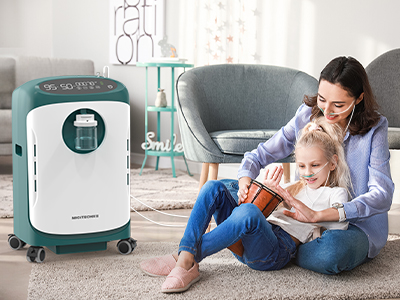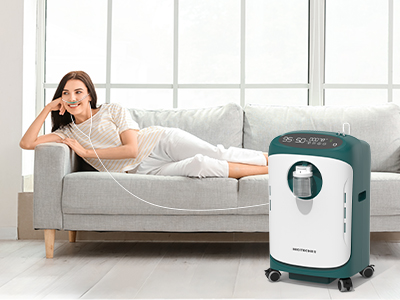25 Oct 2024
Oxygen therapy is a critical intervention for many individuals with respiratory conditions. Selecting the appropriate delivery system can profoundly impact both effectiveness and patient comfort. Among the most common methods of delivering supplemental oxygen are the nasal cannula and portable oxygen masks. Each device has unique attributes that cater to specific needs and circumstances. Understanding these differences is essential for making an informed choice.

Definition of Nasal Cannula
A nasal cannula is a lightweight device that delivers oxygen through two small prongs that sit in the nostrils. It is often connected to an oxygen supply, allowing patients to receive a continuous flow of supplemental oxygen while engaging in everyday activities.
Definition of Portable Oxygen Mask
A portable oxygen mask, on the other hand, is a face mask that covers the nose and mouth, providing a more concentrated delivery of oxygen. This system is typically secured with elastic straps, ensuring a snug fit that can accommodate higher flow rates.

Benefits of Nasal Cannula
Comfort and Ease of Use
The nasal cannula is widely regarded for its comfort. Its design allows for minimal interference with normal activities, making it suitable for use during meals, conversation, and even while sleeping. Patients often prefer it for extended periods due to its unobtrusive nature.
Suitable Oxygen Flow Rates
Nasal cannulas are typically used for lower oxygen flow rates, making them ideal for patients with moderate respiratory issues. They can effectively deliver oxygen at rates of 1 to 6 liters per minute, providing adequate support without overwhelming the patient.
Versatility in Activities
One of the primary advantages of the nasal cannula is its versatility. Patients can easily wear it while engaging in physical activities, such as walking or exercising, enhancing their overall mobility and quality of life.
Advantages of Portable Oxygen Masks
Enhanced Oxygen Delivery Efficiency
Portable oxygen masks are designed for enhanced oxygen delivery, making them suitable for patients requiring higher concentrations of oxygen. The mask covers both the nose and mouth, allowing for more effective oxygen absorption.
Improved Sealing and Oxygen Concentration
The snug fit of a portable oxygen mask ensures that the oxygen delivered remains concentrated, minimizing the risk of environmental air dilution. This is particularly beneficial for patients with severe respiratory conditions who need maximum oxygen support.
Suitable for Higher Flow Rates
These masks can accommodate higher flow rates, typically ranging from 6 to 15 liters per minute. This capability makes them an ideal choice for acute situations where immediate and robust oxygen delivery is critical.
Comparative Analysis: Nasal Cannula vs. Portable Oxygen Mask
Oxygen Delivery Efficiency
When comparing oxygen delivery efficiency, the portable oxygen mask generally offers superior performance for patients needing higher concentrations of oxygen. In contrast, the nasal cannula is effective for those with less severe requirements.
Patient Comfort and Preference
Comfort is subjective and varies from person to person. While many patients favor the nasal cannula for its comfort during prolonged use, others may prefer the robust oxygen delivery of a mask, especially during times of distress.
Situational Suitability
The choice between a nasal cannula and a portable oxygen mask often depends on the situation. For routine use at home or during light activities, a nasal cannula may suffice. In contrast, for acute medical conditions or during exercise, a portable oxygen mask might be more appropriate.
Considerations for Selecting the Right Device
Medical Conditions and Oxygen Requirements
Understanding the specific medical condition is crucial in determining the right oxygen delivery device. Patients with chronic obstructive pulmonary disease (COPD) may find a nasal cannula sufficient, while those experiencing acute respiratory failure may need a portable oxygen mask.
Duration of Use and Activity Level
Consideration of how long the device will be used daily and the level of activity is vital. For long-term use, a nasal cannula may be preferred for comfort, while a portable mask could be used during more intensive activities or short-term therapy.
Patient Lifestyle and Personal Preferences
Lifestyle factors play a significant role in choosing an oxygen delivery system. Patients who lead active lives may prefer the flexibility of a nasal cannula, while those prioritizing oxygen efficiency might lean toward a portable mask.
Common Scenarios for Use
Situations Ideal for Nasal Cannula
Nasal cannulas are often favored in home settings, during light physical activities, and for patients requiring consistent oxygen therapy without significant interruption.
Situations Ideal for Portable Oxygen Masks
Portable oxygen masks are commonly used in emergency situations, during medical transports, or for patients with acute exacerbations needing immediate and concentrated oxygen therapy.
Consultation with Healthcare Professionals
Importance of Professional Guidance
Engaging with healthcare professionals is essential for determining the most appropriate oxygen delivery system. They can provide insights into specific needs and recommend the best device based on individual health status.
How to Discuss Options with Your Provider
Patients should feel empowered to discuss their preferences and concerns with healthcare providers. Open communication can facilitate a collaborative decision-making process, ensuring that the chosen device aligns with the patient's lifestyle and medical requirements.
Conclusion
Choosing between a nasal cannula and a portable oxygen mask involves careful consideration of various factors, including oxygen delivery efficiency, patient comfort, and specific medical needs. By understanding the unique benefits and situations suited for each device, patients can make informed decisions that enhance their oxygen therapy experience. Consulting with healthcare professionals further ensures that choices are aligned with best practices for individual health outcomes.
Keywords: oxygen
Originally published 25 Oct 2024, updated 25 Oct 2024.